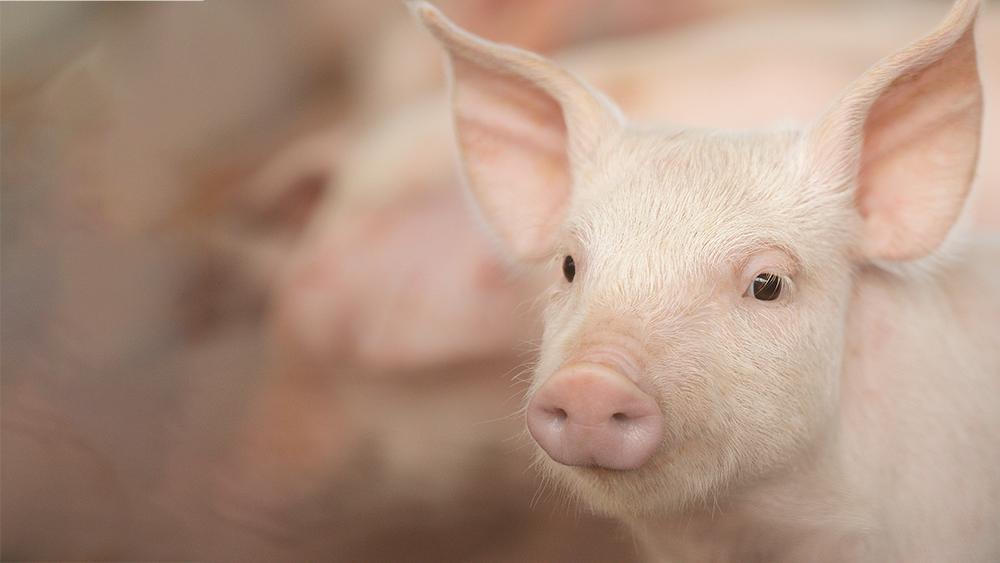“The longer I’ve been in this business, the more convinced I am that [producing quality weaned pigs] is about the people taking care of the piglets,” says Ken Stalder, Ph.D., professor of animal science at Iowa State University. You need the right people to implement the practices, the right people identifying what needs to happen and the right people to communicate health challenges upstream to the veterinarian or the regional manager.
“You need people who are knowledgeable and willing to go the extra mile,” he adds.
It’s all about the basics, Stalder says good stockmanship and observation skills, the knowledge to know what to do after you see something, and an ‘action attitude.’
A recent article considering optimum weaning weight and age covered important rules of thumb involved with producing a quality weaned pig. Along with those tools, management has a strong influence on age and weight considerations as well, says Lindsay Case, PIC key account director in Canada and past genetics services manager for North America and Latin America.
“It starts at the birthing process itself,” Case says. “Producers should use procedures that result in a very quiet birthing procedure. They should handle those pigs with what most of us would refer to as ‘Day 1’ pig care, being certain that the pigs are immediately warm and dry, and have ready access to colostrum.”
She adds that split-suckling can help lighter or less aggressive pigs receive sufficient colostrum, which is critical for weight gain and survivability.
Fernando Gomez, PIC wean-to-finish technical services director, says if producers choose to wean a younger pig, they should focus on:
- Management: Adjust early pig care procedures. “Receiving younger pigs is not the same as receiving older pigs,” Gomez says. Younger pigs can create more challenges, and employees may need to be trained differently. Pre-planning is critical based on the age of the pig.
- Communication: “Feedback to the sow unit will allow for continuous improvement in the overall process,” says Gomez.
- Keep the End in Mind: The goal is to reach the optimal weaning weight at the optimal weaning age. When producers increase weaning age, they are also increasing weight. They need the necessary resources (space, management, health, genetics, and facilities) to reach that goal.

Flow and Parity
The farrowing house flow and parity of the females are also important management factors, says PIC’s Case.
“Producers need to maintain the overall flow for a consistent number of sows farrowing each week,” she says. “When you’re managing a system’s average wean age, a part of it is making sure you have a consistent number of sows entering the farrowing room and being weaned each week. That goes back to making sure the breeding target is being met for with a consistent flow.
“It’s also about ensuring a balanced parity profile within the farrowing room,” she adds. “Too many gilts could potentially compromise the birthweight goals across the room, and too many older parity sows might create more variation.”
Nutrition
A critical component driving the weaning weight of the pig is the sow’s daily feed intake and diet density during lactation, says Connor.
“One of the dynamic changes that has occurred in our industry was based on studies several years ago that indicated we could put sows on full feed generally the day of farrowing or the day after farrowing, which is important for milk production and also important for re-breeding rates of the sow.”
A number of studies provide guidance on the amino acid and energy density needed to optimize milk output and consequently the weight gain of the individual pig, he adds. “We want lactating sows put on full feed at the time of farrowing, with the goal of averaging better than 12 lbs. per day of intake during 23 days of lactation.”
In addition to feed, it’s also important to have adequate water and water flow for both the sow and the piglet is important, Connor points out. The availability of water is correlated with feed consumption and even Day 1 and Day 2 pigs will intake water as part of their daily ingestion, he says.
If the sows are in good body condition, they’ll be able to nurse pigs throughout the lactation period.
“We need to use all the information we have available today to improve the body condition of the sow,” says Sergio Canavate, PIC technical services director – applied female reproduction “Piglet quality will be at risk if the sow’s body condition isn’t correct, especially during her first gestation.”
“Sows have to produce milk and that milk is for the benefit of pig growth,” he adds. “As much as we are able to make sows eat and drink more during lactation, the higher the weaning weight.
Fitting the Pieces Together
Raising a quality weaned pig means many components need to come together, as this article illustrates.
“The more successful farms – those that achieve better production records and are consistently in the top 25% when benchmarking – know you have to make all things work, including communication, in order to achieve that level of production,” says ISU’s Stalder. One of the things about our pork industry is the creativity and innovative attitude of our producers really helps drive change.”
Article by JoAnn Alumbaugh, and originally featured in Farm Journal’s PORK






